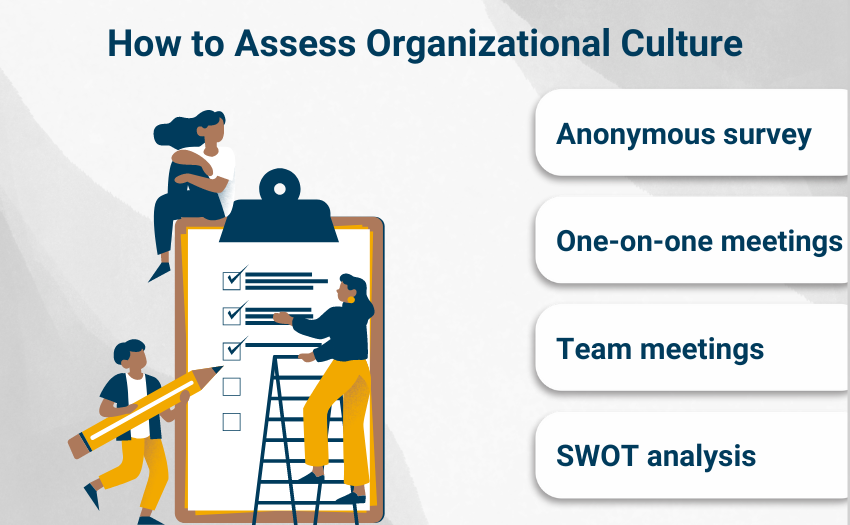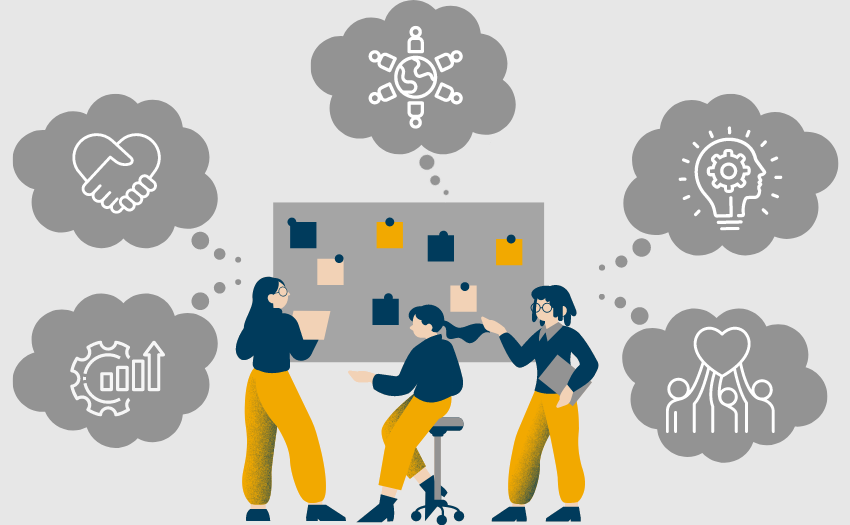There is no one-size-fits-all approach to analyzing workplace culture; however, combining multiple data collection methods will produce the most accurate and actionable results. The more information you have to work with, the better.
Set a Vision and Goals for Cultural Transformation
Having an overarching vision and clear goals encompassing short and long-term objectives is crucial for cultural transformation. You’re currently at point A, your vision is point B, and your goals provide a roadmap for the in-between. It's important to note that cultural change efforts can become hindered without a clear direction forward.
When setting goals, be sure they are specific and measurable to track progress throughout the transformation journey. For example, a short-term goal could be to increase diversity in the leadership team by 20% within the next year, while a long-term goal could be to create a workplace culture where open communication and collaboration are the norm.
Invite your team to be part of the goal-tracking process and brainstorm ways to reach these desired numbers as a group.
Commit to Change as a Leadership Team
Leadership teams play a crucial role in driving cultural shifts within an organization. From the top down, they share the desired tone and direction with team members, shaping the values, beliefs, and behaviors that define company culture. To leverage influence most effectively, all company leaders must be on the same page in their commitment to cultural transformation.
One way for leaders to solidify their dedication to organizational change is through designing a culture change initiative utilizing the Strategic Fitness Process. An SFP program requires a deep assessment of the existing culture, aligning the organization's strategic goals with its values, and creating actionable steps to drive momentum toward shaping the organizational culture.
No matter the strategies leaders decide to employ, a delicate balance of open communication, stakeholder alignment, and talent elevation is the recipe for success.
Identify Core Values That Align With The Future







